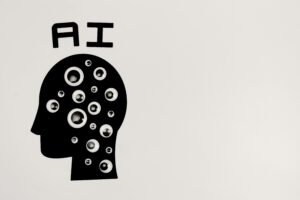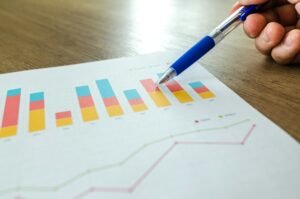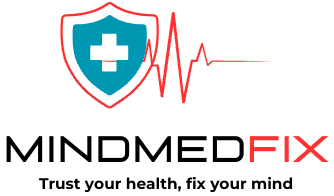With increasingly more of us becoming members of the next decade, well-being and wellness have evolved from being an individual obsession—to being a pillar of how we live healthy lengthy life, do more, and live more and better days. Wellness is far more tech-driven, far more social, and far more informed in 2025 than it has ever been. The test has been put to bed and what was niche is now mainstream, and technology is now part of how we care for our bodies and minds.
Below is a closer look at the top 10 health and wellness trends to watch in 2025, providing an overview of what’s behind this worldwide phenomenon—and why it’s significant.
-
Artificial Intelligence and Genomics-Based Personalized Nutrition

AI-driven personal nutrition market in 2025 is thriving. Customers no longer adhere to generic tips like “eat less carbs” or “add more greens to your diet.” Instead, they are employing DNA analysis, microbiome testing, and metabolic profiling to tailor diets according to their individual biological profiles.
The goods such as ZOE, Inside Tracker, and Nutrigenomics offer individualized suggestions based on blood glucose response, richness of gut microbiome, genetic tendency, and even markers of food intolerance. This transformation not only optimizes compliance with diet protocols but also dampens inflammation, enhances digestion, and enhances clarity of mind.
Moreover, machine learning algorithms are refining their recommendations in real time, adjusting for changes in stress, sleep, and activity levels. What we’re seeing is not a trend but a transformation: nutrition is becoming a personalized science.
-
Longevity and Biohacking

The worldwide attention to longevity has spawned a biohacking movement for studying methods of living longer and enhancing its quality. What was potentially a niche thought for biohacking before, it is extensively studied and developed in 2025.
Methods like:
- Intermittent fasting and time-restricted feeding
- Red and near-infrared light treatment for repairing cells
- Cold therapy via ice baths or cryotherapy
- NAD+ and NMN supplementation for healthy mitochondria
- Monitoring biological versus chronological age aren’t all becoming scientifically sound.
Wearable devices such as the Aging.AI device, GlycanAge, and metabolic sensors are allowing people to make evidence-based lifestyle modifications to lower disease risk and decelerate aging.The “biohacking for longevity” culture is no longer the domain of highly competent athletes or Silicon Valley technocrats—it’s mainstreamed among regular health-aware consumers who desire to live healthier and longer.
-
Mental Fitness and Digital Therapy

Mental health has become a mainstream concern from a stigmatized issue. Mental conditioning in 2025 is on an equal footing with cardiovascular or muscular conditioning. It involves routine workouts to develop emotional strength, flexibility of mind, and alertness.
Online platforms like:
- Woebot (Artificial Intelligence-augmented CBT therapy)
- Wysa (emotion-based journaling and conversation therapy)
- Headspace and Calm (guided meditation and stress monitoring)
- Flowly and TRIPP (VR-enabled therapy for anxiety and pain) have made mental health services more accessible, particularly to marginalized communities.
Based on new user patterns, search terms such as “best apps for mental fitness and digital therapy” have experienced massive spikes in searches. This is indicative of a greater acceptance of autonomous, technology-supported methods for emotional health.Group support opportunities are also increasing, with websites providing access to peer-facilitated circles and trauma-informed coaching groups.
-
Microbiome Optimization

The microbiome of your gut—the enormous universe of bacteria, viruses, and fungi in your stomach—is a vital component of immunity, hormone balance, brain power, and even weight. Microbiome optimization is the area of focus for health planning in 2025.
Viome, Thryve, and BiomeSight are just some of the companies that sell microbiome testing kits at home, which reveal actionable insights into your digestive system. The aim is to maximize microbial diversity and balance, typically through:
- Targeted prebiotics, probiotics, and synbiotics
- Individualized dietary modifications (e.g., resistant starches, fermented foods)
- Reducing antibiotic misuse and processed foods
As more information becomes available in research, the gut-brain axis is still linked with digestion and mental well-being. Consumers are increasingly looking for “gut microbiome optimization tips for improved immunity,” and they realize that restoration of the gut can also lead to improved sleep, mood, and energy levels.
-
Circadian Health and Sleep Technology

Sleep science has come into the limelight, and in 2025, it is considered an essential part of preventive health. More and more people are now approaching circadian health solutions to enhance the quality of their sleep and wakefulness during the day.
The trends are:
- Smart sleep trackers (Oura Ring, Whoop, Fitbit Sense) tracking the sleep stages and recovery scores
- Lighting solutions in tune with circadian rhythms that simulate sunrise and sunset
- Weighted blankets and sleep sounds
- Melatonin-supplemental wearables such as Apollo Neuro that promote parasympathetic activity
The focus shift—toward sleep efficiency, depth, and timing instead of overall sleep time—illuminates a shift in sleep health awareness. Searching for “circadian rhythm tools to optimize sleep naturally” is a manifestation of increased public recognition that sleeping optimization is science, not art.
-
Essential Movement and Functional Fitness Diversity

As wellness goes mainstream, individuals are adopting functional fitness—exercise to simplify daily movement and avoid injury. The trend has a bias toward mobility, flexibility, coordination, and balance, not strength or body composition.
Functional exercises include:
- Animal Flow and primal movement patterns
- Pilates, yoga, and calisthenics
- Resistance training with body weight or kettlebells
- Simulating daily functions—squatting, lifting, pushing, pulling
People, particularly those above 35 years, are more and more being attracted to “functional fitness movements for aging well” and benefiting from physical independence in their later years.
This trend represents a major transition from performance-oriented fitness to a more long-term movement strategy.
-
Climate-Conscious Wellness

Sustainability is not an add-on category anymore; it’s infused into all aspects of wellness in 2025. Individuals seek products and practices that harmonize with environmental ethics, which has given rise to a surge of regenerative wellness products.
Examples:
- Zero-waste makeup packaging
- Plant-based proteins with extremely low environmental footprint
- Ethical sourcing of vitamins
- Biodegradable material-using sustainable athleisure brands
Terms such as “climate-aware consumers with sustainable well-being habits” are on the rise as consumers prefer balance between self and planet well-being. Businesses are lashing back with open supply chain, carbon-neutral transportation, and refillables.
Alongside this, climate worry is also being targeted in therapy sessions where nature connectedness and mindfulness practices are used to alleviate ecologic sorrow.
-
Tech-Enabled Preventive Health

Old-fashioned “wait until you get sick, then go for care” is being overtaken by data-driven, proactive self-monitoring. Technology-facilitated preventive health is ahead of disease in 2025.
Leading-edge technologies are:
- Continuous Glucose Monitors (CGMs) to track metabolic function (e.g., Levels, Nutrisense)
- Digital breath analysis for metabolizing fat (e.g., Lumen)
- At-home over-the-counter diagnostic kits for hormones, thyroid, and inflammation markers
- AI-based health coaches offering individualized lifestyle changes
These technologies enable immediate feedback so that it is easier to change behaviors and avoid the development of chronic disease. Instead of responding to symptoms, patients are enabled to make incremental, long-term changes.
This model can decrease healthcare costs while enhancing quality of life—one wearable at a time.
-
Awareness of Hormonal Health

For decades, hormonal well-being—especially for women—was underrepresented in healthcare and medicine. That is rapidly changing. In 2025, hormonal consciousness is a pillar of total well-being.
The main advances are:
- Exercise programs that cycle-sync workout intensity with hormones
- Adaptogenic herbs such as ashwagandha and maca to regulate stress
- Perimenopause tracking apps (Clue, MySysters)
- Hormone-tracking wearable sensors (Tempdrop, Oova) that monitor fertility and progesterone levels
Need for “hormonal health tracking in women 2025” arises from growing awareness that hormones govern weight and energy, as well as mind sharpness and heart risk for distant travel.
The trend liberates people, women included, to have independent, individual control over their own medical care throughout all phases of life.
-
Social Wellness and Community-Based Healing

Long-term COVID-19 pandemic lockdown impacts have placed social wellbeing at the forefront of priorities. Healer in 2025 is not only an individual process, but also a shared one.
Top trending community solutions include:
- Emotional healing and connection-based wellness retreats
- Exercise classes functioning as social networks
- Peer-led mental health circles
- Meaning-based apps creating real online and offline connections
The words “social wellness trends and community-based healing” are a wake-up call culturally: we are healthier when we’re not alone. From group meditation to wellness cohorts at work, humans are learning vulnerability and being with others essential building blocks of health.
Conclusion: Health and Wellness in 2025 Is Integrated, Informed, and Intentional
The leading health and wellness trends of 2025 portend a future that is:
- Personalized with data and AI
- Preventive through ongoing self-monitoring
- Holistic through convergence of mind, body, and environment
- Sustainable for the planet and generations to come
- Integrated of all stages of life and personas
No matter whether you’re diving into tech-enabled preventive health, embracing climate-smart wellness habits, or making an investment in emotional and hormonal health, today is the time to bring more mindfulness to how we think about well-being.
These trends are not fleeting; they are a persistent shift in what we understand by health. Being educated—and more so, deliberate—can enable you to flourish in all areas of life.



